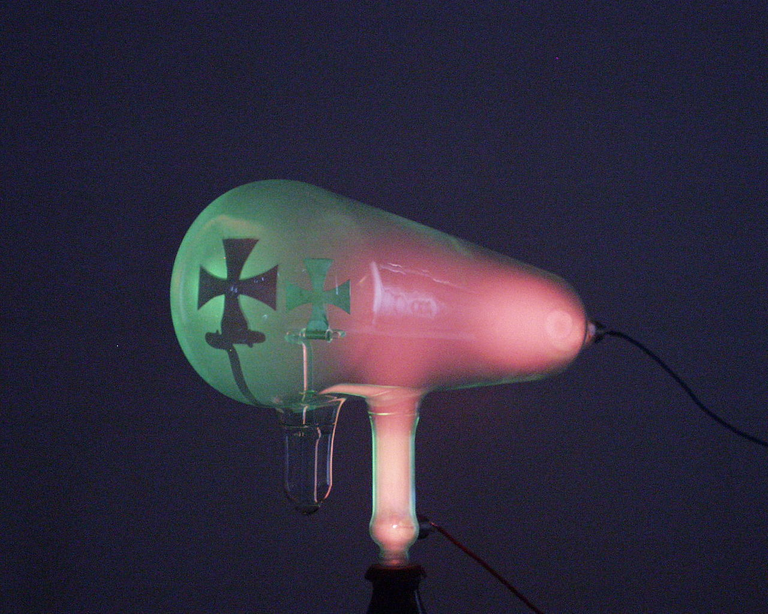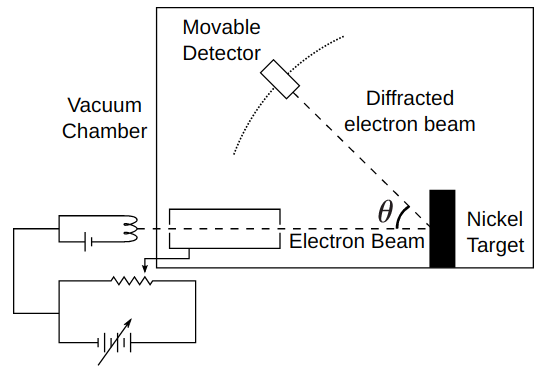T
ime for some quantization!
Quantum mechanics is considered to be a subtle subject, and surely I am not very good at it. So, I decided to test my stamina and check how far I can write on this without falling asleep or making the reader dizzy...
So, in this article I try to test myself, where I start losing grip I'll leave! 😃
I had just been reading the book Elegant Universe by Brian Greene, and surely the book was very interesting, and I'll get back to it soon...
0. What is Quantum Mechanics?
Quanum Mechanics (QM) deals with the mechanics at the atomic scale. Meaning let's say we have a particle moving with a velocity v in one dimension, or maybe a ball thrown with that velocity in a particular direction, we surely can predict where the ball will be after a given time t0 has passed, provided we know the initial location.
We can simply use the Equations of Motion and find out the final configuration (position, velocity) of the ball. This comes under a part of physics called Classical Mechanics, classical simply because it is sort of the trivial and well understood case.
1. What went wrong with Classical Mechanics?
Every new subject comes into existence only because our known knowledge can not help us in understanding nature. So we realize that our present knowledge is not sufficient and try to push its boundaries further.
As Chad Orzel writes in his book Breakfast with Einstein:
As is often the case, the easiest way to explain the need for a radical new theory is to first illustrate the failure of the old one.
Quantum Mechanics was no exception, and came into existence mainly because of the insufficiency of Classical mechanics. So, let's try to go back into the past and see what lead to its creation.
Newtonian Mechanics
You see Sir Isaac Newton was essentially the first person to contribute to this subject (Classical Mechanics), and he described the basic laws governing the motion of macroscopic objects.
He gave the three very basic laws called Newton's Laws of Motion... from where comes the equation F = m . a
. . . till in school we learn only this much and the world seems to revolve only around these and their derivatives, but soon comes the realization!! ... hey, that's definitely not all in Classical Mechanics!
Lagrangian Mechanics
Lagrangian mechanics is a reformulation of classical mechanics, introduced by the Italian-French mathematician and astronomer Joseph-Louis Lagrange in 1788.
Many a times, Newtonian Mechanics is not well-suited for problems and so we use a different flavor called Lagrangian Mech. after the name of the great scientist who devised it.
... well there is a bit more to it, more-or-less everything remains very much valid for macroscopic things...it's only the microscopic which has not yet been tested...
Putting things in perspective:
- Sir Isaac Newton lives from 25 December 1642 – 20 March 1727.
- Joseph Louis Lagrange lived from 25 January 1736 – 10 April 1813.
- BlackBody Radiation: In 1858, Balfour Stewart described his experiments on the thermal radiative emissive and absorptive powers of polished plates of various substances, compared with the powers of lamp-black surfaces, at the same temperature.
- Discovery of Electron: In 1897, J.J. Thomson discovers that cathode rays are not electromagnetic waves but made of particles that are 1,800 times lighter than hydrogen (the lightest atom). These were particles later come to be known as "electron"s.

(A CRT experiment using Crooke's Tube showing that cathode rays follow straight line paths)
Now, since by 1897, we knew about electrons and they could easily by experimented with in the laboratory in the form of Cathode Rays generated within the Cathode Ray Tube (CRT) people started experimenting with it (Murphy's Law ?! 😃).
So, in a CRT, electrons are released from the cathode, and are attracted towards the anodes (the beam of electrons was earlier called the "Cathode Rays").
1.1) Planck's constant is born
In 1900, Max Planck possibly for the first time introduces "quantization" in the form of Planck's constant ( h ) which he introduces as part of a function made to explain the blackbody radiation curve finally getting rid of the Ultraviolet Catastrophe - a problem that other explanations to the curve were facing.
Photoelectric Effect: Now, in another experiment, it was found that when light fell on a metal surface, under certain conditions, it lead to the emission of electrons from the metal surface. This is also called Photoelectric Effect.
Extending Planck's investigation in several ways, including its connection with the photoelectric effect, Albert Einstein proposed that light is also propagated and absorbed in quanta; now called photons. These quanta (photons) would have an energy given by the Planck–Einstein relation:

...and a correspondong momentum given by:

1.2) De-Broglie Hypothesis
Later on, Louis Victor Pierre Raymond de Broglie (that was quite a long name!), a French physicist in his PhD thesis in 1924 hypothesised that just like photons have both matter and wave nature, all other material also has dual nature.
He in his hypothesis gave the following formula for the wavelength of the matter-waves of all material particles:

Where, h is again the Planck's constant having a value of 6.626 x 10-34Js , and p is the momentum given by p = m v
1.3) Diffraction - Testing De-Broglie's Hypothesis
Science really doesn't stop at hypothesizing, once a hypothesis has been put forward, for it to be accepted, it needs to be tested extensively. Even after having a zillion successes, a single failure will be enough to declare it's demise.
The Davisson Germer Experiment
Clinton Davisson and Lester Germer performed an electron diffraction experiment

(Davisson-Germer Experiment Diagram)
The electrons then get diffracted via Braggs diffraction due to the layered structure of the Ni crystal. The diffracted beam form a wave pattern (spatially varying amplitude) which is detected as a function of the angle by a pivoted movable detector.
This was an interesting first experiment that demosntrated diffraction in electrons which were considered to be material particles (those with mass) unlike photons.

(Electron gun from a CRT)
The Davisson-Germer experiment clearly showed the existence of wave nature of electrons...and other material particles.
All of us have wave properties, it is only more feeble for more massive objects, but is always there.
Diffraction: Diffraction refers to various phenomena that occur when a wave encounters an obstacle or a slit. It is defined as the bending of waves (light or matter waves) around the corners of an obstacle or through an aperture into the region of geometrical shadow of the obstacle/aperture.
(Diffraction pattern of a red laser beam projected onto a plate after passing through a small circular aperture in another plate)
1.3.1) Modern-day Diffraction Experiments & Uses
LEED (Low-Energy Electron Diffraction)

(LEED pattern of a Si(100) reconstructed surface.)
1.4) So, where does QM enter the scene?
We have seen that since material objects also have wave properties which are more pronounced for smaller objects (low masses like electrons, photons) lesser for larger particles.
This meant that though Classical picture could help understand the dynamics of larger objects, for smaller particles like electrons, Classical Mechanics would spectaculaly fail, and would require a radical deviation from old principles. Wave nature would require us to think of them as probability densities, and localization will have limits. We can no longer pin-point an object at a particular point in space, objects will now have spreads like a wave packet.
More over, the universe is no longer an infinitely resolved scenery. We have chunkiness which was first theoretically seen in the Planck's constant. Every photon is now an energy packet of a fixed quantum. The photons of light of 550nm all have the same energy given by hv, any smaller packet of 550nm photon is not possible.
The same quantization principle will later be found useful in explaining chunkiness in other physical properties like angular momentum.
This marked the birth of the era of Quantum!
So, to understand Quantum Mechanics we first need to dive into Wave Mechanics...
We'll look at this subject in the next few articles.
2. Concluding remarks...
Quantum Mechanics is everywhere, from the glowing toaster filament to the fact that chairs are quite sturdy and we don't often fall through them!
We just need to go out and look closer!
3. Physics beyond Quantum...
Our understanding of the quantum world only allows us to understand the smaller objects and particles, but we don't yet know why the same principles don't apply to the macroscopic world. e still need to find laws that can take everything into account, and can describe everything from gravity to Classical mechanics, relativity and the miniscule particles of the quantum world.
One good candidate for such a theory is the String Theory.
Hope you found this article interesting.
Thanks for your time.
Best
M. Medro
References
Credits
- Crookes Tube CRT, Wikipedia | License: CC BY-SA-3.0
- Davisson Germer Setup Diagram, Wikipedia | License: CC BY-SA 3.0
- Electron Gun from a CRT, Wikipedia | License:Public Domain
- Diffraction Pattern of red laser, Wikipedia | License: CC BY-SA 3.0
- LEED Image, WIkipedia | License: CC BY-SA 3.0

Great post!
I don't agree much with your point 3. Before going to string theory, you should consider an intermediate step that we master well: quantum field theory. This unifies quantum mechanics, special relativity and field theory. From there, we can then move further. This could be string theories, or other stuff.
By the way, you may like a series I wrote on that topic 3 years ago (see here and all posts quoted at the end). This is inspired from this reference book which will be translated into English in 2021 (hopefully as this takes time and my time is limited).
I am sorry, though I had heard of Quantum Field Theory, my knowledge about it was limited, as a result it didn't strike me while I was writing this article.
Woah!! Thank you for the book and the articles...now I'll have something interesting to read, and keep me busy for a while!
Thanks once again.
And oh, I forgot..., are you translating the book!!!? 👀
Yeah, we just started the translation (as I am in fact one of the authors of this book ;) ).
Wow! That's great, I definitely want to read it. Beware of my quantum doubts!! Hahaha.
Best of Luck!!
You will have to be (really patient). The translation project is at the stage of negociations with the editor ;)
Except if you read French ^^
Hmm...learning French will be interesting too....I'll give it a try!
Congratulations @medro-martin! You have completed the following achievement on the Hive blockchain and have been rewarded with new badge(s) :
You can view your badges on your board And compare to others on the Ranking
If you no longer want to receive notifications, reply to this comment with the word
STOPDo not miss the last post from @hivebuzz:
Thanks a lot!
You're welcome @medro-martin 👍🙂
🙂
@tipu curate
Upvoted 👌 (Mana: 32/40)
Thanks for your contribution to the STEMsocial community. Feel free to join us on discord to get to know the rest of us!
Please consider supporting our funding proposal, approving our witness (@stem.witness) or delegating to the @stemsocial account (for some ROI).
Please consider using the STEMsocial app app and including @stemsocial as a beneficiary to get a stronger support.
I was waiting for you to mention the quantum cat :). That is the only thing I tend to understand when it comes to quantum mechanics...lol
Better to mention a quantum computer. It is the same thing (somehow) :)
Oh!! Schrodinger's cat! Haha...that's my weakness too!
Hi @medro-martin, great write-up.
For clarity and ease, preferably, pls do insert the link to the image
Thanks. Done